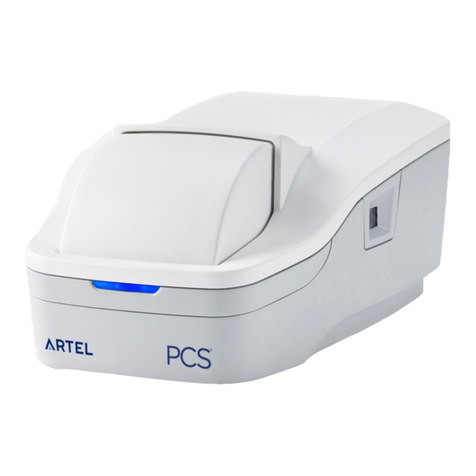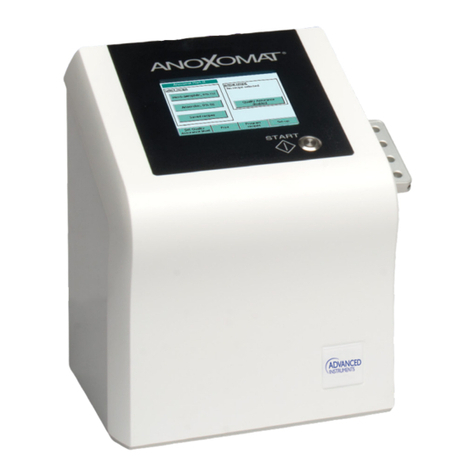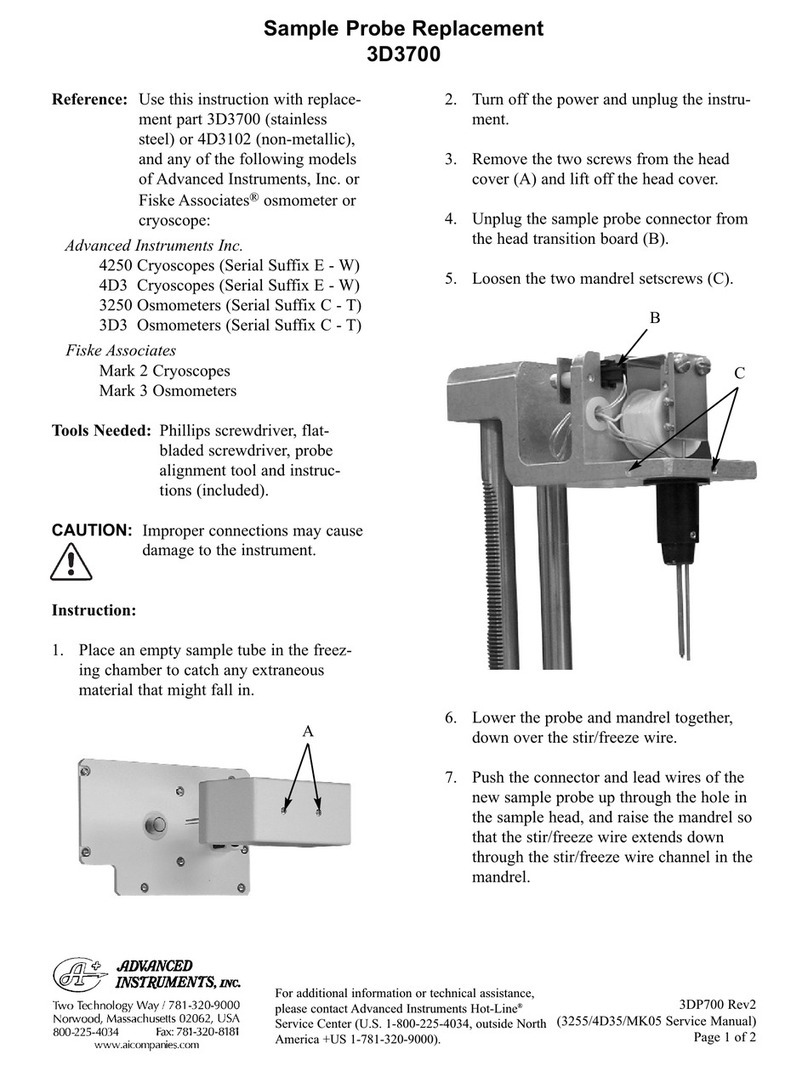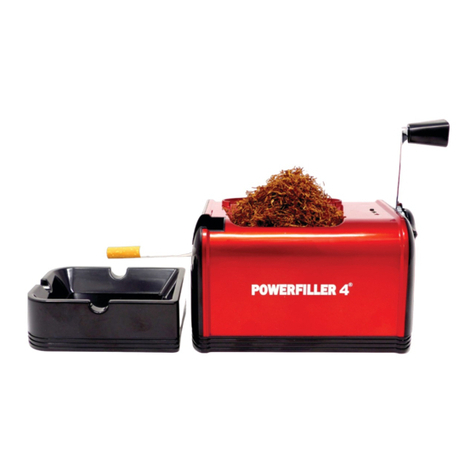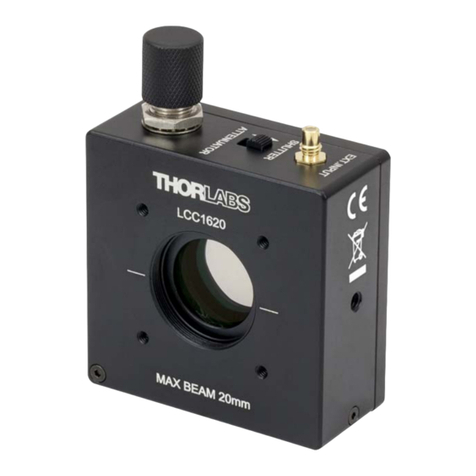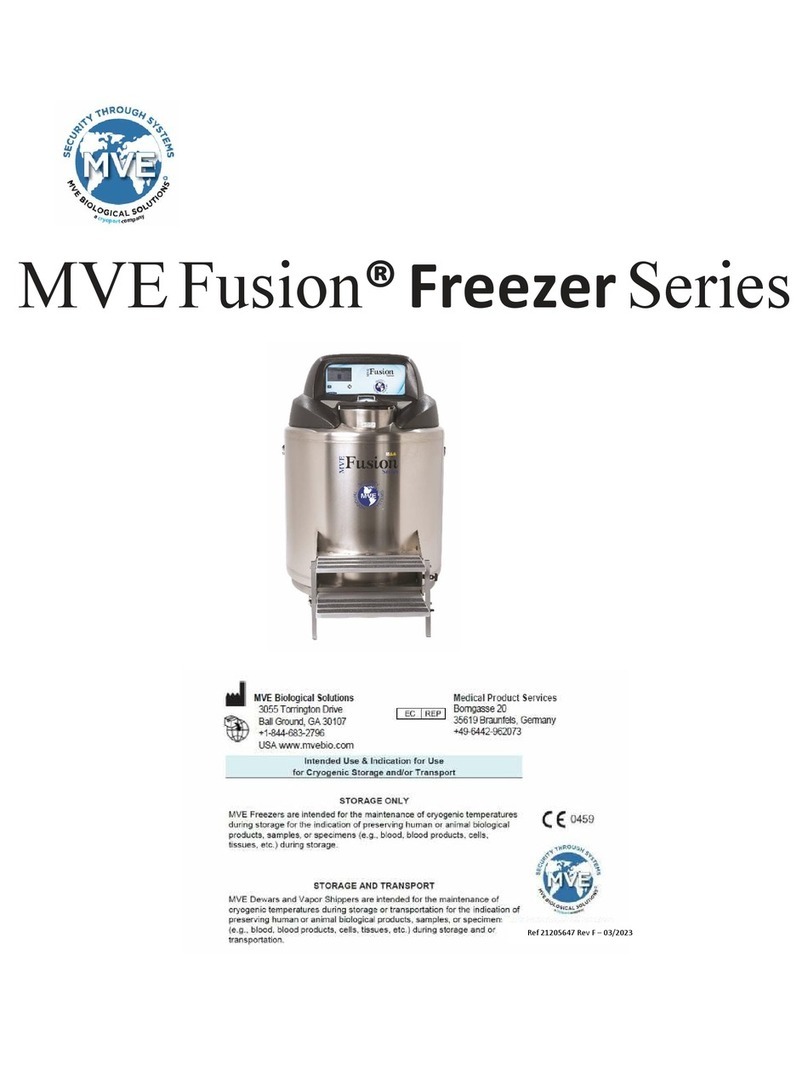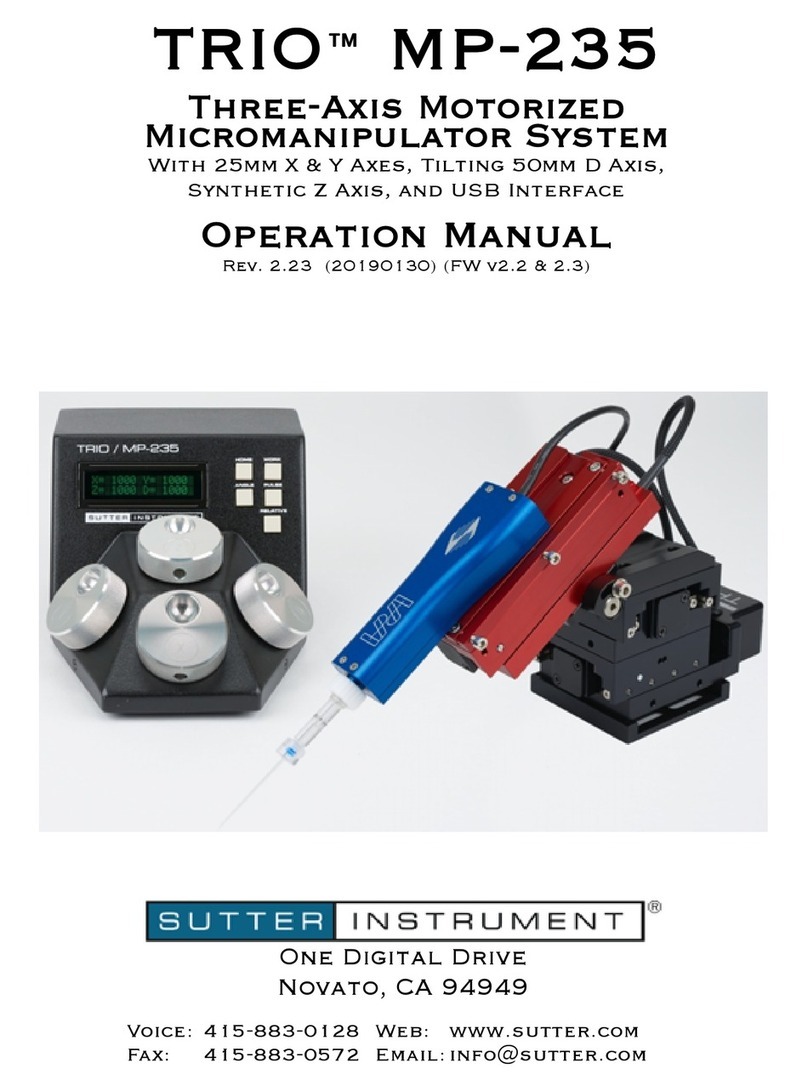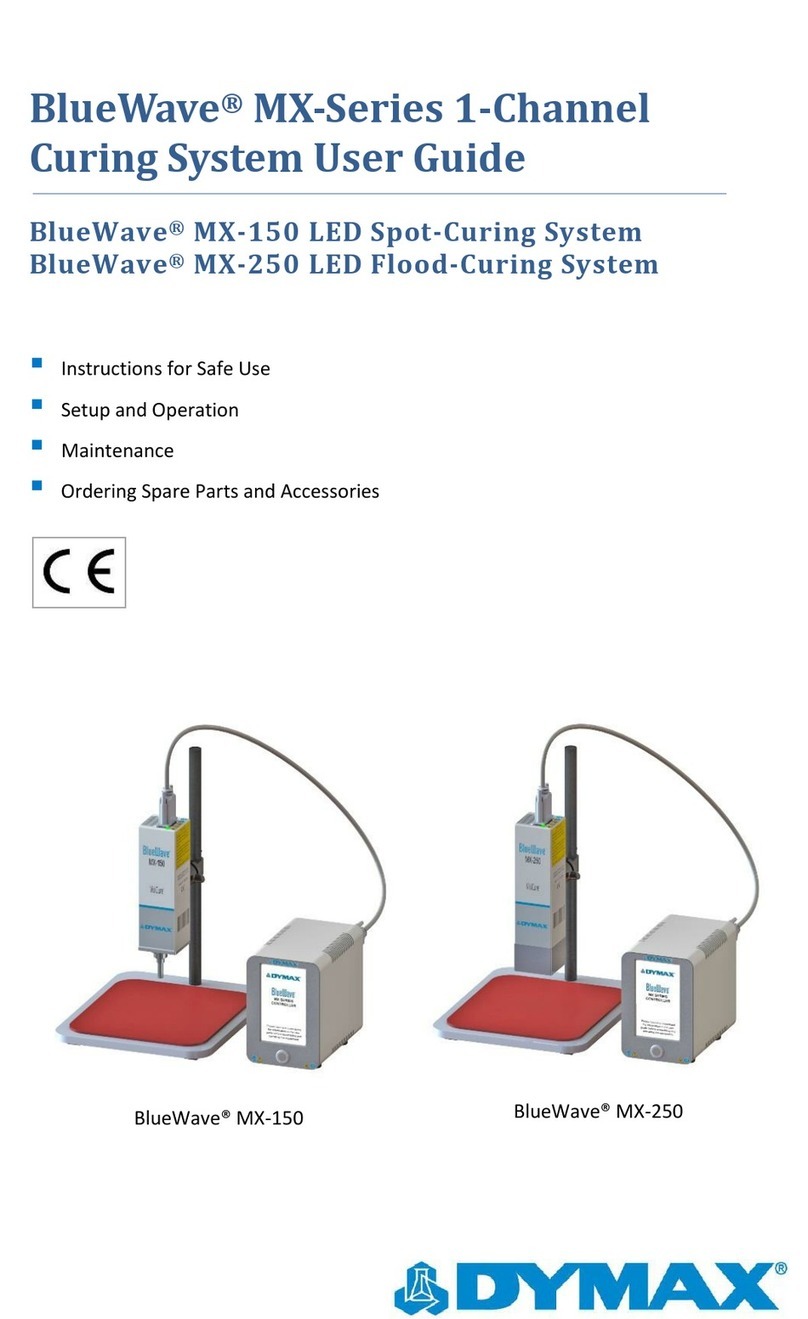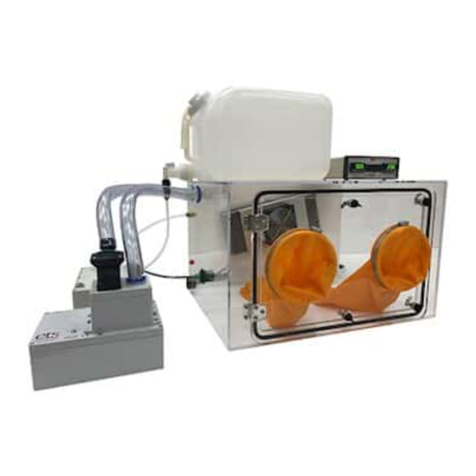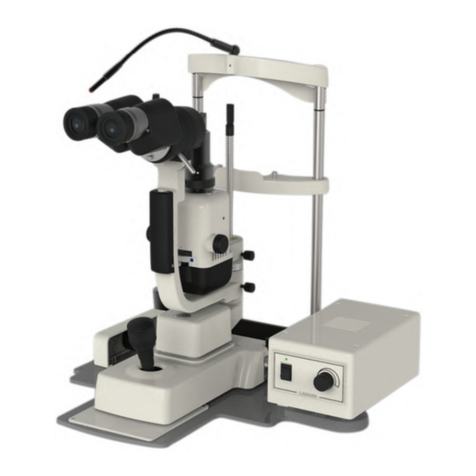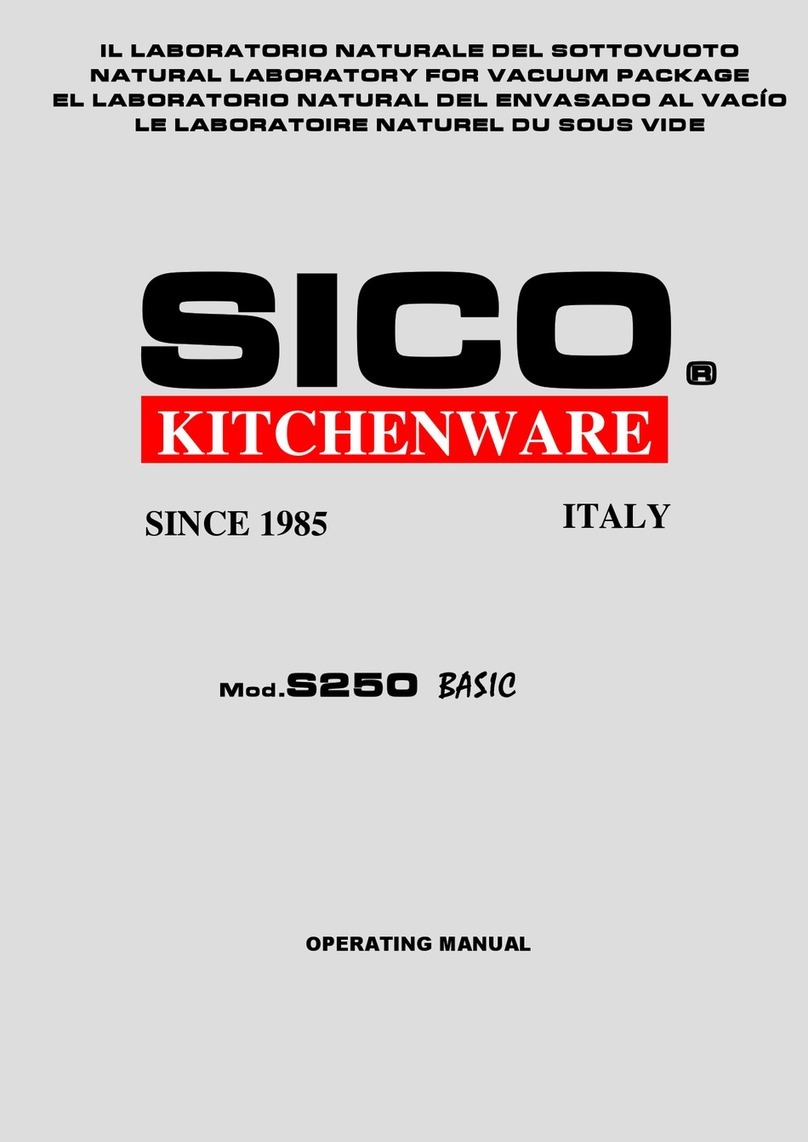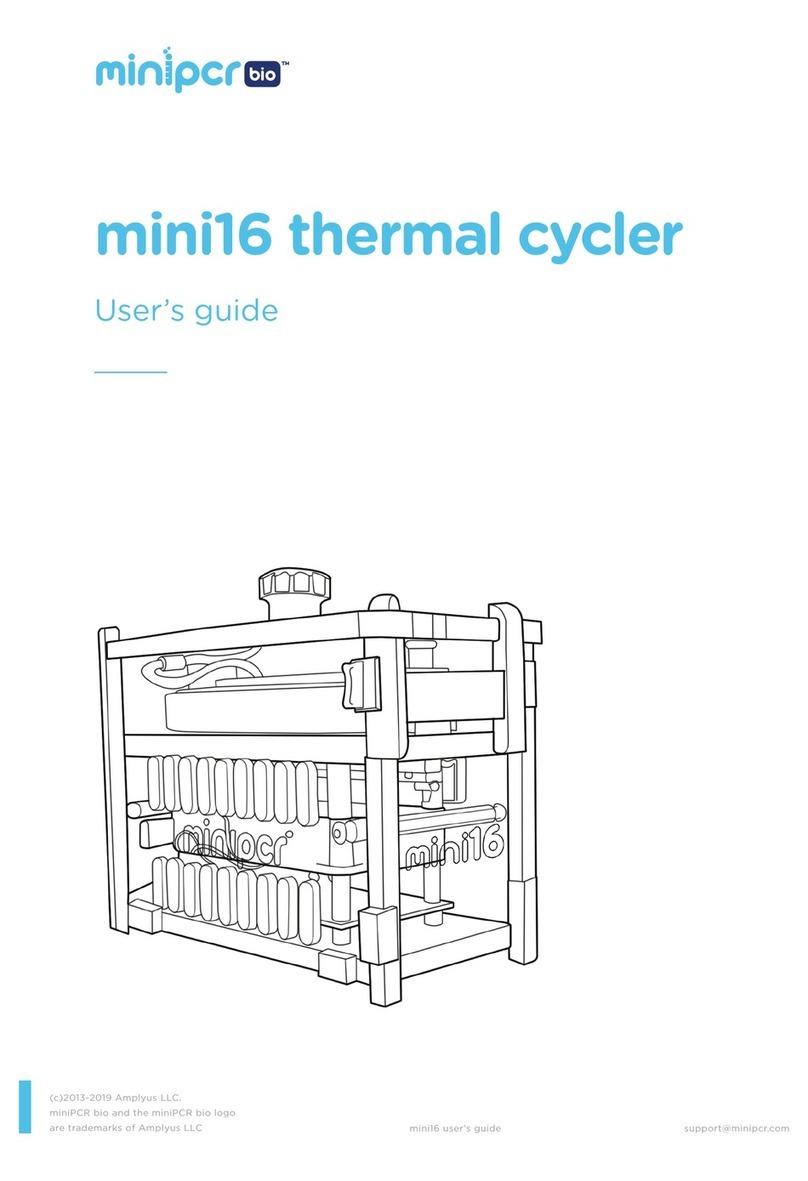Advanced Instruments 4250 User manual

4255 Rev11 032317
The Advanced® Cryoscope
Model 4250
User’s Guide

ii
Advanced®Cryoscope Model 4250 User’s Guide
Copyright
This user’s guide is copyrighted by dvanced Instruments with all
rights reserved. Under copyright laws, this guide may not be reproduced
in any form, in whole or part, without the prior written consent of
dvanced Instruments.
© 2005 dvanced Instruments.
dvanced Instruments has reviewed this guide thoroughly. ll material
contained within is believed reliable, but the accuracy and completeness
are not guaranteed or warranted, and are not intended to be representa-
tions or warranties concerning the product described.
Microsoft®and Windows®are registered trademarks of Microsoft
Corporation in the United States and other countries. Intel®is a regis-
tered trademark of Intel Corporation in the United States and other
countries. ll other trademarks are the property of dvanced
Instruments.
Hot-Line®Service
If you have any questions or problems regarding the proper operation of
your instrument, please contact our Hot-Line Service department by
calling one of the following numbers.
• 800-225-4034 (toll-free within the US and Canada; after normal
business hours, dial extension 2191)
• +US 781-320-9000 (elsewhere)
• 781-320-0811 (fax)

Table of Contents
iii
Safe Use vii
Symbol Conventions vii
General Cautions viii
FCC Requirements ix
Supplies, Parts & Accessories xi
Calibrators & Standards xiii
Foreword: Theory and Technique xv
Figure 1: Standard Freezing Curve xvii
Chapter 1 — Installation & Setup 1
Step 1 — Find a location for the instrument 1
Step 2 — Obtain additional items 1
Step 3 — Unpack the instrument 2
Step 4 — Install the heat transfer fluid 2
Step 5 — Load printer paper 5
Step 6 — Power up the instrument 5
Step 7 — Prime the heat transfer fluid pump 7
Step 8 — Run a diagnostic test 8
Step 9 — Set date and time 9
Step 10 — Set language preference 9
Step 11 — Check initial factory calibration 9
Step 12 — Proceed to Chapter 2 10
Figure 2: Model 4250 Cryoscope and Accessories 3
Figure 3: Load Printer Paper 6
Figure 4: Prime the Heat Transfer Pump 8
Table 1: Model 4250 Cryoscope Packing List 3

Chapter 2 — Instrument Operation 11
Hazardous material cautions 11
Function of major components 12
Sample preparation 17
Sample handling 17
Standards & controls 18
Selecting plateau mode 18
Before testing samples 19
Repeatability tips 20
Sample test procedure 23
Sample test errors 25
Changing operating settings 25
Using the RS-232 port 33
Figure 5: Model 4250 Components and Controls 12
Figure 6: Keypad Layout and Functions 14
Figure 7: Back Panel 15
Table 2: Barcode Port Connections 16
Table 3: Setup Menu Items 26
Chapter 3 — Standards & Quality Control 35
Repeatability and accuracy 35
Standards and controls 35
Maintenance of standards 36
Quality control implementation 36
Chapter 4 — Calibration 39
Calibration procedure 39
Celsius and Hortvet 40
Calibration notes 41
Chapter 5 — Troubleshooting & Service 43
Service & maintenance cautions 43
Obtaining service 44
Routine maintenance 46
Shutdown and storage 47
Troubleshooting checks 47
iv
Advanced®Cryoscope Model 4250 User’s Guide

Internal diagnostic tests 48
Fuse replacement 55
Sample probe checks and replacement 55
Mandrel, probe and stir/freeze wire alignment 59
Stir/freeze amplitude adjustment 61
Figure 8: Fuse Replacement 56
Figure 9: Probe and Stir/Freeze Wire Alignment 60
Figure 10: Operating Head 63
Figure 11: Mandrel, Probe and Stir/Freeze Wire Adjustment 65
Table 4: Test Menu Items 49
Appendices
ppendix — Troubleshooting Table 67
ppendix B — Product Specifications 75
ppendix C — Regulatory Notices 77
ppendix D — Warranty & Warranty Duties 81
ppendix E — Supplemental RS-232 Information 85
ppendix F — Symbol Definitions 89
ppendix G — Product Disposal and Recycling 93
ppendix H — Service Log 95
Index 97
v
Table of Contents

Notes:
vi
Advanced®Cryoscope Model 4250 User’s Guide

vii
Safe Use
To reduce the risk of bodily injury, electric shock, fire, and
damage to your instrument, please read and observe the precau-
tions in this User’s Guide.
• If the product is used in a manner not in accordance with the
equipment design, operating instructions or manufacturer's
recommendations, the operation of the product may be
impaired to the extent that a safety hazard is created.
• Do not attempt to perform electrical work if you are not
fully qualified. This manual is not a substitute for electrical
training.
Symbol Conventions
The exclamation point within an equilateral triangle is
intended to alert the user to the presence of important operat-
ing and maintenance (servicing) instructions in the literature
accompanying this product.
The lightning flash with arrowhead symbol within an equi-
lateral triangle is intended to alert the user to the presence of
uninsulated dangerous voltage within the product's enclosure
that may be of sufficient magnitude to constitute risk of elec-
tric shock to persons.
The static symbol within an equilateral triangle is intended
to alert the user to the presence of internal components that
could be damaged by static electricity.
This static symbol is intended to alert the user to the pres-
ence of a specific component that could be damaged by stat-
ic electricity.

viii
Advanced®Cryoscope Model 4250 User’s Guide
This symbol indicates the presence of alternating current ( C).
This symbol indicates the presence of a fuse.
This symbol indicates the presence of protective earth ground.
This symbol indicates the power is ON.
This symbol indicates the power is OFF.
NOTE dditional symbol definitions are available in ppendix F.
General Cautions
• This product should be operated only with the type of power source
indicated on the product’s electrical ratings label. Refer to the instal-
lation instructions included with the product.
• If the power cord provided is replaced for any reason or if an alter-
nate cord is used, the cord must be approved for use in the local
country. The power cord must be approved for the product’s listed
operating voltage and be rated at least 20% greater than the ampere
ratings marked on the product’s electrical ratings label. The cord
end that connects to the product must have an IEC 60320 connector.
• Plug the product into an approved grounded electrical outlet.
• Do not disable the power cord’s grounding pin.
• If an extension cord or power strip is used, make sure that the cord
or strip is rated for the product, and that the total ampere ratings of
all products plugged into the extension cord or strip do not exceed
80% of the cord’s or strip’s rating limit.

ix
Safe Use
• Route power cords so that they will not be walked on, tripped on, or
pinched by items placed upon or against them. Pay particular atten-
tion to the plug, electrical outlet, and the point where the cord exits
the product.
• Do not pull on cords and cables. When unplugging cords or cables,
grasp the corresponding connector.
• Do not install or use this product in any area subject to extreme
short-term temperature variations, or locations that exceed the speci-
fied operating environment temperatures.
• Never use this product in a wet area.
• To avoid injury or fire hazard, do not operate this product in an
explosive atmosphere.
• Do not install or use the product on an unstable, non-level work sur-
face.
• Do not operate this product with the covers removed or unsecured.
FCC Requirements
• WARNING: Changes or modifications to this unit not expressly
approved by dvanced Instruments could void the user’s authority
to operate the equipment.
• This equipment has been tested and found to comply with the limits
for a Class B digital device, pursuant to Part 15 of the FCC Rules.
These limits are designed to provide reasonable protection against
harmful interference in a residential installation. This equipment
generates, uses, and can radiate radio frequency energy and, if not
installed and used in accordance with the instructions, may cause
harmful interference to radio communications. However, there is no
guarantee that interference will not occur in a particular installation.
If this equipment does cause harmful interference to radio or televi-
sion reception, which can be determined by turning the equipment

x
Advanced®Cryoscope Model 4250 User’s Guide
off and on, the user is encouraged to try to correct the interference
by one or more of the following measures:
- Reorient or relocate the receiving antenna.
- Increase the separation between the equipment and receiver.
- Connect the equipment into an outlet on a circuit different from
that to which the receiver is connected.
- Consult the dealer or an experienced radio TV technician for
help.

Supplies, Parts &
Accessories
xi
PART DESCRIPTION
2- mp Time Delay (T) Fuse for 100-130V
Barcode Scanner
Clapper
Heat Transfer Fluid
Heat Transfer Fluid Filter
ir Filters (package of 6)
Printer Paper (5 rolls)
Operator/Supervisor Keys
Probe/Stir Wire lignment Tool Kit
Mandrel
Power Cord (specify voltage and country)
One-way Check Valve
PART NO.
70022
330016
3C2241
3D 811
4D3710
3D2340
FL 835
3D3185
3L 700
3LH500
4D3705
To order parts and accessories, contact the Advanced Instruments
Customer Service Department by using one of the following num-
bers.
• 800-225-4034 (toll-free within the US and Canada)
• +US 781-320-9000 (elsewhere)
• 781-320-3669 (fax)

xii
Advanced®Cryoscope Model 4250 User’s Guide
PART DESCRIPTION
Replacement Sample Probe with Mandrel and one 10-mL
ampule of Probe Bin Setting Fluid (Non-Metallic)
Replacement Sample Probe with Mandrel and one 10-mL
ampule of Probe Bin Setting Fluid (Stainless Steel)
Sample Tube Rack
Sample Tubes marked at 2-mL and 2.5-mL
RS-232 Cable, 3 meters
Service Manual, 3250/4250
Stir/Freeze Coil
Stir/Freeze Wire
dvanced®User Information CD-ROM
Quick Instruction Card
User’s Guide
Yoke
Software Update CD-ROM
Software Update Kit (CD-ROM and Cable)
PART NO.
4D3102
3D3700
3L 846
3L 823
RS232-
C BLE
3255SM
3D2404
4LH243
90P01
4250-7
4255
3LH230
SFW006
SFW008

Calibrators & Standards
xiii
To order calibrators and standards, contact the Advanced
Instruments Customer Service Department by using one of the
following numbers.
• 800-225-4034 (toll-free within the US and Canada)
• +US 781-320-9000 (elsewhere)
• 781-320-3669 (fax)
DESCRIPTION
-422 m°H Calibration Standard (-408 m°C)
-621 m°H Calibration Standard (-600 m°C)
-530 m°H Lactrol®530 Reference Solution (-512 m°C)
PART NO.
3L 023
3L 033
3L 030
NOTE dvanced Instruments cannot guarantee the stated
instrument performance specifications and accuracy of
test results unless dvanced Instruments brand consum-
ables are used with the instrument. Use of consumables
from manufacturers other than dvanced Instruments is
not recommended and may adversely affect system cali-
bration, performance, operation, and accuracy of test
results. For information on obtaining these standards
and controls, contact dvanced Instruments or an
authorized representative.

xiv
Advanced®Cryoscope Model 4250 User’s Guide
Notes:

xv
Foreword
The Theory of Cryoscopy
Principles of Milk Cryoscopy
When a solute is dissolved in a pure solvent, the colligative or
concentrative properties of the solvent change by a constant
amount in direct proportion, within reasonable limits, to the
solute concentration. Of these properties, measurement of the
freezing point, where applicable, allows the concentration of the
solution to be easily determined with great precision.
The freezing point of pure water is precisely 0°C at atmospheric
pressure. Most solutes impede the crystallization of water and
depress its freezing point in proportion to their concentration.
Milk is a water-based solution with various solids in suspen-
sion. The solutes normally present in milk lower its freezing
point by a nearly constant amount.
Instrumentation
The dvanced Cryoscopes are instruments designed for the
extremely precise determination of the concentration of solu-
tions by means of freezing point measurement. They utilize
high precision thermistors to sense the sample temperature, to
control the degree of supercooling and freeze induction, and to
measure the freezing point of the sample.
dvanced Cryoscopes can routinely determine differences of
2 m°C.

xvi
Advanced®Cryoscope Model 4250 User’s Guide
Freezing Point Thermodynamics
The quickest and most precise way to measure the freezing point of a
solution is to supercool it several degrees below its freezing point and
then mechanically induce the sample to freeze. The heat of fusion sud-
denly liberated causes the sample temperature to rise toward a plateau,
wherein the intrinsic sample thermodynamics maintain a temporary adi-
abatic liquid/solid equilibrium. The time over which equilibrium devel-
ops and is maintained is a function of the thermal characteristics of the
sample, the temperature differential between the sample and its environ-
ment, and the ability of the intervening materials to conduct heat. The
equilibrium temperature is, by definition, the freezing point of the solu-
tion.
Optimum precision by this method results from a carefully engineered
instrument. In the 4250, the sample environment is temperature con-
trolled to maximize the efficiency of the instrument without distorting
the freezing plateau. sensitive probe monitors the sample temperature,
controls the degree of supercooling and freeze induction, and measures
the freezing point of the sample. The tip of the sample probe is precise-
ly positioned in each sample. utomatic stirring during sample cooling
and crystallization minimizes sample temperature gradients and gener-
ates a uniform insulating slush which helps stabilize the equilibrium
plateau.
Careful attention to sample-handling and to simple maintenance proce-
dures (e.g., heat transfer fluid replenishment, and probe and stir/ freeze
wire cleanliness) will ensure continued high performance.
Figure 1 illustrates the temperature of a sample as it progresses through
the freezing cycle, and shows the action of the instrument at each stage.
lthough the freezing point plateau in a properly-designed cryoscope
appears flat for a considerable period, extending ideally for many min-
utes, an amplified plot of the plateau temperature would show a very
gradual curve, peaking as the temporary adiabatic condition breaks
down. The “freezing point”of a sample has been defined as the warmest
temperature achieved during equilibrium. Unfortunately, the warmest

xvii
Foreword
temperature achieved during equilibrium can only be definitively deter-
mined after the fact, requiring the sample temperature to be monitored
for a substantial period, through and beyond the “peak”. In addition, the
measurement is demonstrably more repeatable somewhat earlier on the
plateau, where the freezing and melting processes are more adiabatical-
ly balanced.
Commercial cryoscope users, observing that similar samples have simi-
larly sloped freezing point curves under similar conditions, traditionally
have solved this dilemma by taking timed plateau measurements and
calibrating accordingly; it simply is not economical to wait for less-
repeatable peak readings. In order to maintain agreement between dif-
ferent instruments, milk cryoscope manufacturers traditionally have
incorporated plateau timers set for a reasonable compromise between
accuracy and efficiency. Though the length of the plateau varies with
the constituents and size of the sample, we have found freezing point
measurements taken at approximately 30 seconds after the initiation of
crystallization to be most repeatable with 2-mL samples.
Certain milk regulating agencies still mandate or recommend other
times or measurement at the peak of the plateau. The 4250 is factory-set
for 30-second plateau measurements, but it may be set easily at 60 or
90 seconds or for plateau seeking, if desired, as described in Chapter 2,
“Operating Instructions”in this user’s guide.
Figure 1: Standard Freezing Curve

xviii
Advanced®Cryoscope Model 4250 User’s Guide
It is only appropriate to correlate freezing points determined using the
same plateau reading mode. Determinations made using different mea-
surement modes will not yield identical results.
Hortvet, Celsius and the freezing point of milk
The two calibration standards selected to bracket the milk freezing point
range were originally thought by Julius Hortvet to freeze at -422 m°C
and -621 m°C. Later, they were more correctly found to freeze at -407.4
m°C and -599.6 m°C, respectively, a factor of 1.0356 warmer. Both
milk freezing point scales derived from these two sets of numbers are
still in use today. Modern milk freezing point publications often distin-
guish between the two scale units by referring to the former scale as
m°H (Hortvet) and the latter as m°C (Celsius). Either scale may be
selected in the 4250.
R. W. Henningson found that, though varying slightly with breed and
diet, the freezing points of authentic samples of pure, fresh milk from
healthy cows in the U.S. and Canada average -540.4 m°H (-521.8
m°C)2. The freezing point average was -543 m°H (-524 m°C) in
England and Wales3.
s soon as it leaves the cow, however, milk becomes susceptible to both
dilution and contamination. Cows' milk found to have a freezing point
warmer than established regional norms may be suspected to have been
somehow diluted. Cows' milk found to have a freezing point colder than
these norms may be suspected to have soured or become contaminated.
Combinations of both effects are quite possible but seldom unde-
tectable.
The O C, PH and other regulatory organizations recommend -525
m°H (-507 m°C) as a confirmation level; that is, observations of milk
freezing points warmer than -525 m°H (-507 m°C) should be presumed
to indicate added water, but be confirmed by additional observations on
authentic samples from the same herd. The British Standards Institution
recommends that observations of milk freezing points warmer than -529
m°H (-511 m°C) be confirmed.

xix
Foreword
However, any added water reduces productivity. The confirmation level
recommended above is based on national averages. If you find that your
local herd averages allow the establishment of a colder local confirma-
tion level (even with natural variations taken into account), you can
thereby reduce added water accordingly.
Under routine conditions where close comparisons are made between
authentic herd samples and delivered milk, less than 1% added water
generally can be detected. Close field and plant follow-up can assure an
actual added water level under 0.5% in market milk; some authorities
claim 0.2%.
For an excellent summary of the role of milk regulatory agencies in the
United States, please refer to E. H. Marth’s article, Assuring the uality
of Milk4.
Percent deviation from base (% DFB)
Early milk freezing point investigators often thought the solute concen-
tration of milk to be more constant than it actually is. Contemporary
milk cryoscopy literature often referred to a concept called “% added
water”which, it was thought, could be calculated using a fixed base,
without actually measuring the sample with no added water. This con-
cept assumed that milk samples with freezing points equal to or colder
than the local average (usually called the “base”) to contain 0% added
water, and pure water to contain 100% added water. Using this assump-
tion (with the -540.4 m°H (-521.8 m°C) national average as the base),
the current -525 m°H (-507 m°C) confirmation level would represent
2.8% added water:
100 (540 - 525) / 540 = 2.8%
and would approximately correspond to the often-used 3% “cut-off”
level, which thus allows for a small amount of natural variation and
measurement error.
lthough we now know that the actual “percent added water”of a sam-
ple cannot be determined without measuring the same sample with no
added water, it can be seen that the percent deviation from some

xx
Advanced®Cryoscope Model 4250 User’s Guide
arbitrarily-selected freezing point value can be useful in quantifying rel-
ative deviation. For example, having determined the average local freez-
ing point and normal variation of the milk of a particular cow, herd or
breed, one can estimate the percentage of deviation due to a particular
condition, disease or additive.
The option to set a base freezing point value and have the cryoscope
calculate the percent deviation from the base, of each sample tested, has
been built into the Model 4250. However, since it is no longer accept-
able (nor accurate) to label all positive deviations from a base value as
“added water,” we suggest reporting deviations from a base as “% DFB”
(percent deviation from base). Using % DFB in this manner can provide
a guideline for estimating the quality of milk samples in respect to the
base established. ll unknown samples of milk run against this base
value will show a deviation above or below the base.
The 4250 calculates the percent deviation from the base (% DFB) as
follows:
DFB = (base value - observed value)/base value x 100
s noted, part of this deviation is attributable to natural variation and
measurement error. Factors other than the addition of water to milk,
which can cause additional positive deviations from the base (DFB),
include:
1. Poor herd condition
2. Poor feed and/or pasture conditions
3. Drought conditions
4. Extended milk storage, CO2decrease
Factors which can cause unacceptably negative deviations from the base
(% DFB) include:
1. Dirty sample tubes
2. Sour milk
3. Chlorine sanitizer in the milk sample
4. Milk adulterated by salt-fortified water
Table of contents
Other Advanced Instruments Laboratory Equipment manuals
Popular Laboratory Equipment manuals by other brands
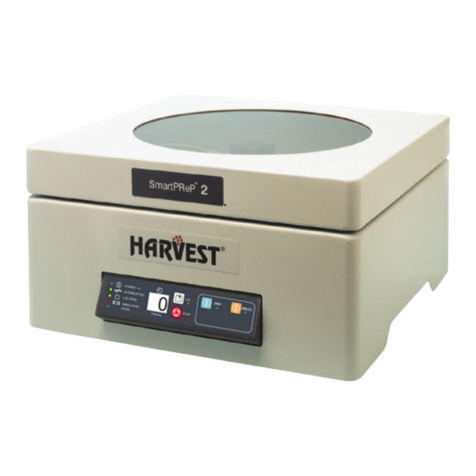
Terumo
Terumo Harvest SmartPReP 2 Operator's and service manual
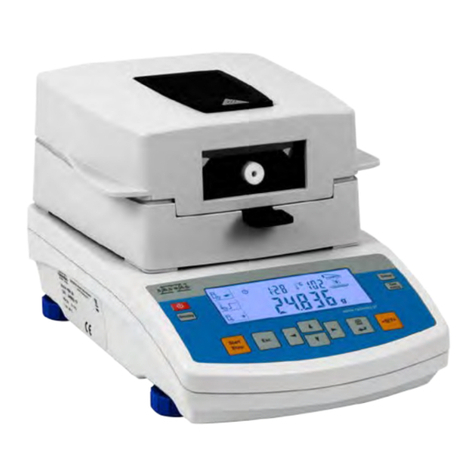
RADWAG
RADWAG MAC Series user manual
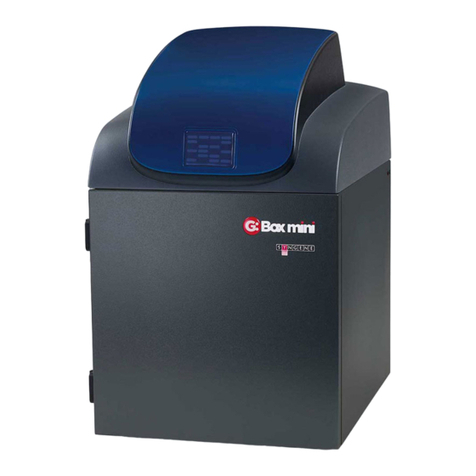
Syngene
Syngene G:BOX mini 6 Installation quick guide
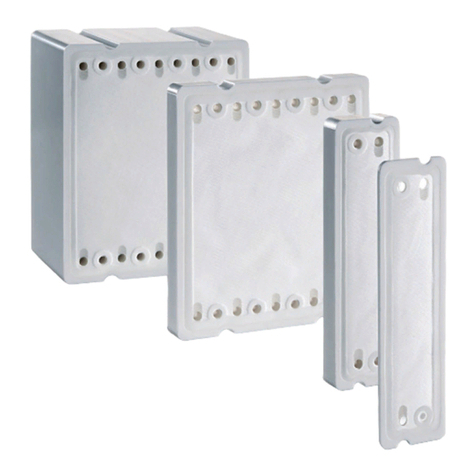
Sartorius stedim
Sartorius stedim Sartocube ECO Series user manual
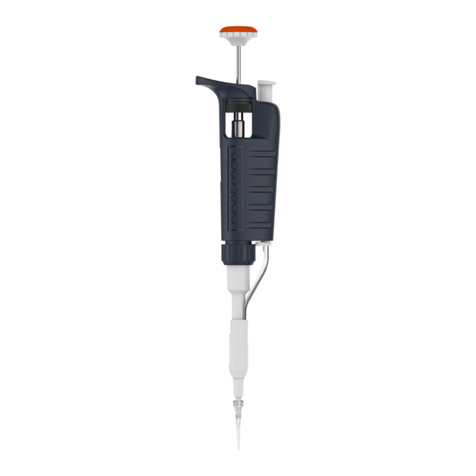
Gilson
Gilson PIPETMAN Classic P2 quick guide
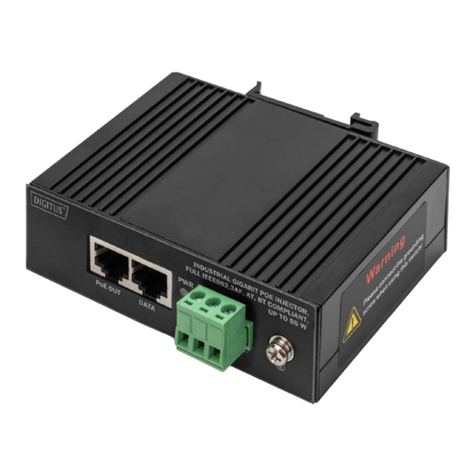
Digitus
Digitus DN-651141 Quick installation guide
